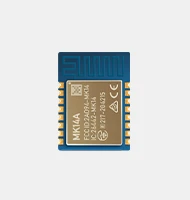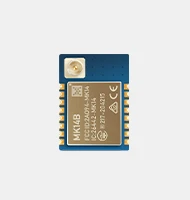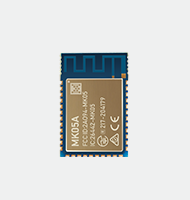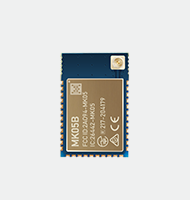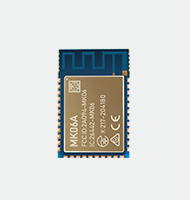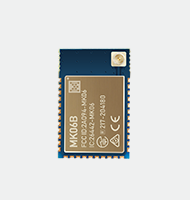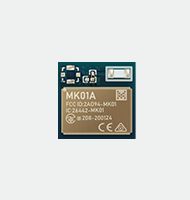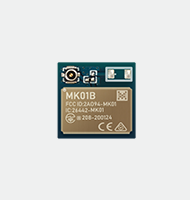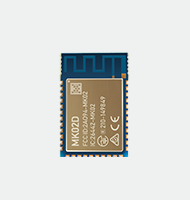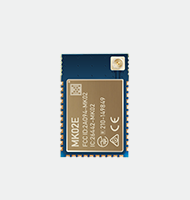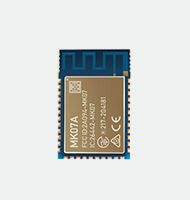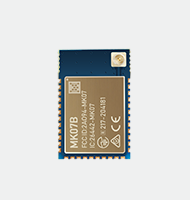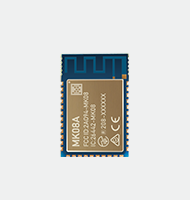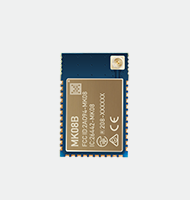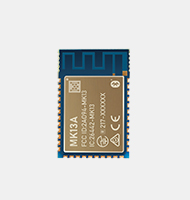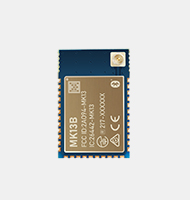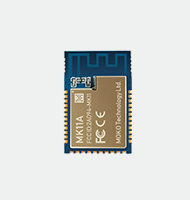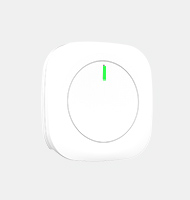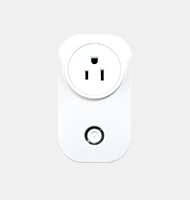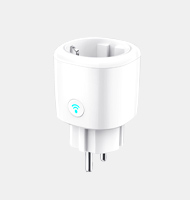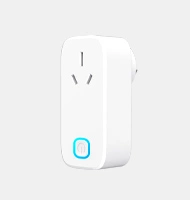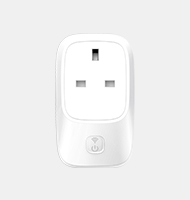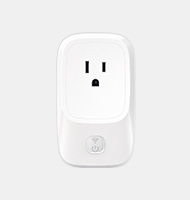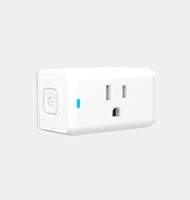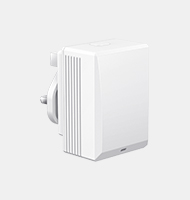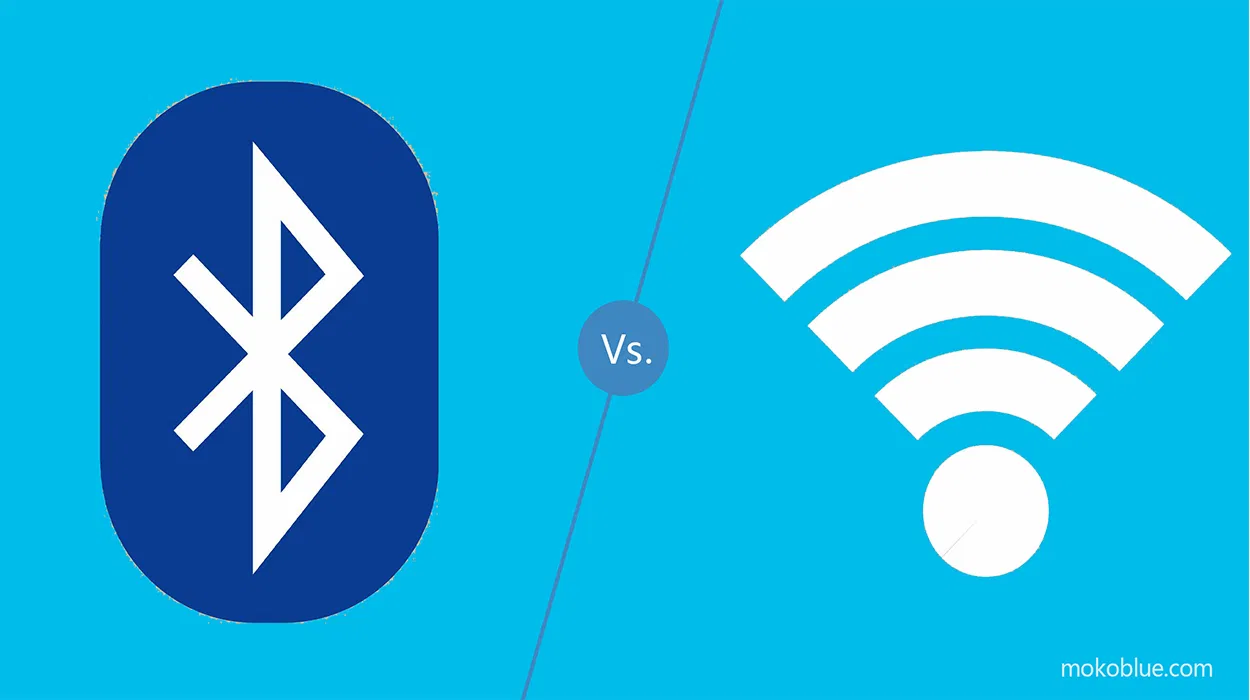In the context of the explosive development of the Internet of Things, the number of networked devices is increasing, and wireless communication technology is playing an increasingly important role in the Internet of Things. At present, the most commonly used wireless communication technology standards of the Internet of Things mainly include WiFi, Zigbee, and Bluetooth, among which the majority of users are most familiar with WiFi and Bluetooth. What’s the difference between WiFi and Bluetooth, or which technology is better or more suitable? This article will focus on the difference between Bluetooth and WiFi and the actual market application.
An overview of Bluetooth and WiFi
Bluetooth and WiFi are both wireless transmission technologies used to connect devices, but they are totally different from each other. Bluetooth is primarily used to exchange data between connected devices, while WiFi is used to connect the devices and the internet. In order to better distinguish the two, it is necessary to define how Bluetooth and WiFi work.
What is Bluetooth
Bluetooth is widely leveraged to transmit data between electronic devices within a short distance. For example, you can pair your phone with a Bluetooth wireless headset, or connect your iPad with a wireless keyboard. Like WiFi, Bluetooth enables data transmissions using radio signals, and it uses the same frequency as WiFi, which may cause interference to WiFi devices.
Usually, you need to turn on the Bluetooth function of the devices you want to pair, and then select this device from another device. For example, you may need to press the Bluetooth pairing button on your wireless headphones, and then select the headset from the list of discoverable Bluetooth devices on your smartphone.
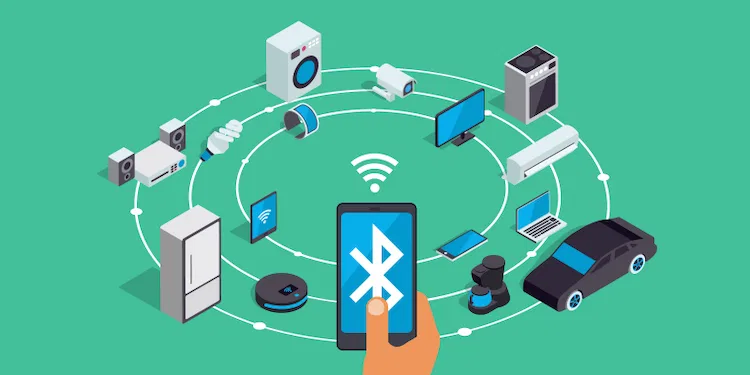
Bluetooth technology has always played a vital role in the field of smartphones, especially in electronic products. Now almost all the wireless devices you can find support Bluetooth, including computers, laptops, mobile phones, keyboards, tablets, smart watches, console gaming devices, headphones, Bluetooth speakers, etc. If you find the Bluetooth symbol on your device, it means that you can connect your device to another Bluetooth-enabled device wirelessly.
What is WiFi
WiFi is a wireless technology using radio waves, which allows computers, laptops, tablets and smartphones to connect to the internet wirelessly. The most common way for WiFi devices to surf the internet is to connect to a WiFi router. The WiFi router will establish a connection with an internet service provider, which will broadcast a WiFi signal. Nearby devices can then connect to that signal and successfully connect to the Internet. Apart from accessing the internet, these devices can also be set up to communicate with each other and exchange data by creating a network.
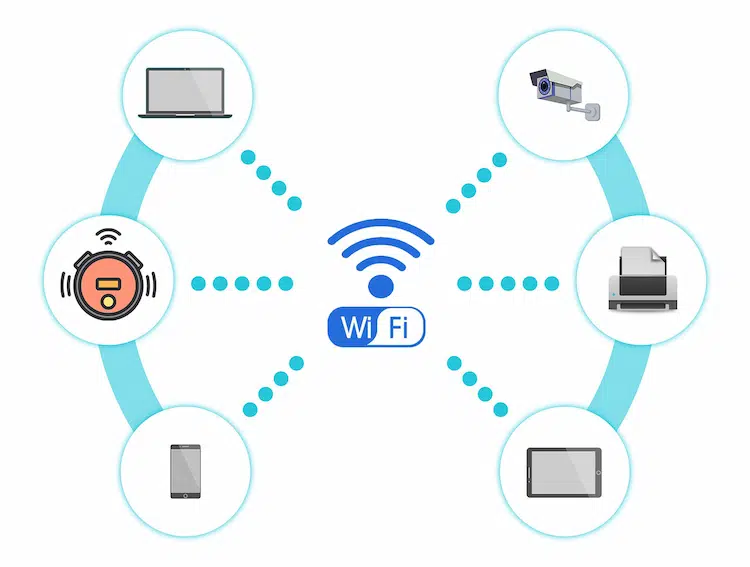
Today, you will find WiFi receivers in most computers, smartphones, iPads, smart TVs, printers, digital cameras, sweeping robots, and other smart home devices. If you find the WiFi symbol on your device, it means that the device can connect to the internet wirelessly. And, if you see this symbol at airports, cafes, and libraries, chances are that they have provided free or low-cost wireless internet access to your device.
Seven differences between Bluetooth and WiFi
As IoT technology penetrates into all walks of life, WiFi and Bluetooth each have their own foothold, and they can find special requirements that are suitable for a certain application, thus establishing the differentiation of competitive technologies. Below we will show you a detailed comparison between Bluetooth and WiFi, read on and find out the 7 differences.
1. Market positioning – This refers to consumers’ views on this technology compared with other competitive technologies.
According to Bluetooth, the total annual Bluetooth device shipments is 4.7 billion in 2021 and are expected to grow at a CAGR of 9% during 2021-2026. Right from addressing audio streaming to low-power data transfer, indoor location and large-scale device networks, Bluetooth is rapidly expanding its applications.
Almost all of us use WiFi in our homes and offices, as well as in public spaces such as shopping malls and airports. It’s hard to imagine what a world without wireless networks would be like. Wi-Fi seems to be the preferred wireless technology in the IoT market, but the reality is far from what we thought. It may be a significant component in implementing IoT projects, but it is not a competitor for the hottest connectivity solutions of IoT.
2. Power consumption – refers to the amount of electrical energy consumed per unit of time.
In terms of power consumption, the energy consumption of Bluetooth low energy is about ten times lower than that of WiFi. The low power consumption of Bluetooth is due to the optimization of the protocol to transmit a large number of very small data packets. As far as WiFi is concerned, it is a high-bandwidth communication protocol with very high power requirements. Especially for battery-powered devices, high power consumption is the fatal shortcoming of Wi-Fi communication technology.
3. Topology – the pattern in which various devices are connected with each other. It can be classified into four principal topologies: star, ring, bus, and mesh.
A variety of network topologies can be found in Bluetooth, including point-to-point, broadcast, and mesh networks, the most common of which is the point-to-point topology. Bluetooth mesh uses a mesh topology, and the more devices connected to the network, the wider the range will be. If there’s any signal point of failure, another route can be leveraged to transform the message.
Star topology is widely used in WiFi networks, where all nodes are directly connected to a central hub, such as a wireless route. Although adding and removing any devices from the network will not disrupt the entire structure, imagine that if the hub fails, the whole network will break down. Traditional WiFi connections are limited by distance because there must be a hub to connect with other devices.
4. Data rate – a term used to indicate the speed of data transmission, that is, the number of bits per second transmitted over the radio signal.
Compared with the data transmission speed of Bluetooth, the transmission speed of WiFi is much faster. Bluetooth supports the transmission of small pieces of data and is ideal for the transmission of lightweight data such as numerical values from IoT sensors. WiFi devices are enabled to transmit hundreds of megabits per second, and it could be faster in newer versions. WiFi is more suitable for sending large data files, such as videos, photos, etc.
5. Range – It means the physical distance of wireless communications between two devices.
Bluetooth-based wireless connections have a maximum connection range of 30 meters, while Wi-Fi can be extended to 150 meters. The transmission range of Bluetooth depends on obstacles to a great extent, so it will vary in different contexts. If you are using Bluetooth mesh, you can easily extend your coverage to a wider mesh network by using the relay points. WiFi coverage is excellent, and it can be extended by using signal extenders and other access points.
6. Compatibility with smartphones – refers to the degree of mutual coordination between the wireless protocols and smartphone or any other mobile devices.
Currently, almost all newer iOS and Android smartphones support the latest Bluetooth and WiFi standards. It’s true that Bluetooth and WiFi are improving the user experience in different ways. Bluetooth can help listen to music wirelessly or get data from any other smart wireless device. With just one mobile application, users can achieve communication with Bluetooth-enabled devices. Unlike Bluetooth, Wi-Fi cannot communicate directly with smart devices, it requires a network and a central access point to communicate.
7. Security – refers to the secure management of data transmission over the network, which is an important stage to ensure data security and integrity.
There were serious security flaws in early Bluetooth, but most of the problems have been solved with the newer standards. These versions offer 128-bit encryption to ensure data security. WiFi requires a password to connect the device to the network, this means that the connection is usually more secure than Bluetooth. WiFi uses 256-bit encryption and has developed advanced security protocols like WEP, WPA, WPA2, and WPA3, among which WPA3 is ideal for transmitting critical and sensitive data.
A comparison chart of Bluetooth and WiFi
In addition to the differences presented above, there are still some other differences such as specification authority and year of development. To get more differences between Bluetooth and WiFi, the comparison chart below will give you the answer.
| Bluetooth | WiFi | |
| Specifications authority | Bluetooth SIG | IEEE, WECA |
| Year of development | 1994 | 1991 |
| Frequency band | 2.4 GHz | 2.4 GHz; 5 GHz |
| Modulation type | GFSK | BPSK, QPSK, COFDM, CCK, OFDM |
| Channel bandwidth | 1 MHZ | 22 MHZ |
| Basic cell | Piconet | Star |
| Max signal rate | 1 Mb/s | 54 Mb/s |
| Nominal range | 10m | 100m |
| Power consumption | Low | High |
| Security | Bluetooth is less secure than WiFi. | WiFi is more secure than Bluetooth. |
| Ease of use | It’s simple to use. | It’s relatively complex and requires configurations of software and hardware. |
Bluetooth and WiFi: which is better for IoT connectivity
When it comes to which wireless transmission technology is better, it depends on what you are planning to achieve. The advent of Bluetooth technology makes short-range wireless communication possible, but its complex protocol and high cost make it unsuitable for wide application in home networks. Real use cases such as smart homes, building management systems, industry 4.0, and remote asset monitoring based on BLE and Bluetooth mesh network specifications show that Bluetooth seems to be the preferred technology for low-bandwidth communication in the Internet of Things.
Energy efficiency, resource weight, cost, and other form factor restrictions have always been the main challenges of deploying the Internet of Things using Wi-Fi. The strong mobility of Wi-Fi enables users to access the internet at any time, so it is more suitable for office and home environments. However, WiFi uses radio frequency technology to send and receive data over the air, and data signals are transmitted through radio waves, which are susceptible to external interference. In the fierce competition of the Internet of Things, wifi is far behind.
In a word, compared with low power consumption and low bandwidth communication standards, Bluetooth radio is the best. Although Wi-Fi is great and a very reliable protocol, its application range is very limited. Wi-Fi router is used to surf the Internet, so it should probably be put there.
Learn more about the MOKOBlue Bluetooth solution
The original purpose of Bluetooth technology development is to free users from the shackles of data cables, and its vision is to create a smart future in an interconnected world. At the same time, the demand for the interconnection of all things drives the continuous growth of Bluetooth devices and product innovation. MOKOBlue is a leading Bluetooth manufacturer around the world, specializing in developing various Bluetooth beacons, modules, and gateways. If you are looking for any Bluetooth IoT project, MOKOBlue is the best choice.
FAQs about Bluetooth and WiFi
Is it possible to use Bluetooth without WiFi?
It’s possible, certainly. Bluetooth allows you to transfer data between devices without accessing the Internet, but many devices require a WiFi connection to work properly, so not all Bluetooth devices can work without WiFi. For example, you need to send files from your computer to your printer using WiFi. However, if you have a Bluetooth printer, a WiFi connection is not needed.
Can you run Bluetooth and WiFi at the same time?
Yes. Bluetooth and WiFi run separately without interference, so you can use both functions at the same time. However, since Bluetooth and Wi-Fi signals mainly use the frequency band of 2.4 GHz, it may happen that they cannot run at the same time.
Which consumes more data: Bluetooth or Wi-Fi?
Neither Bluetooth nor WiFi requires any cellular data. Bluetooth devices achieve connections without surfing the internet, so there is no need to worry about paying overage data fees. WiFi enables smart devices to access the internet without consuming any cellular data. Note that when your smartphone is not connected to WiFi, many network service providers automatically switch it to cellular data, which may cause excessive data charges.
